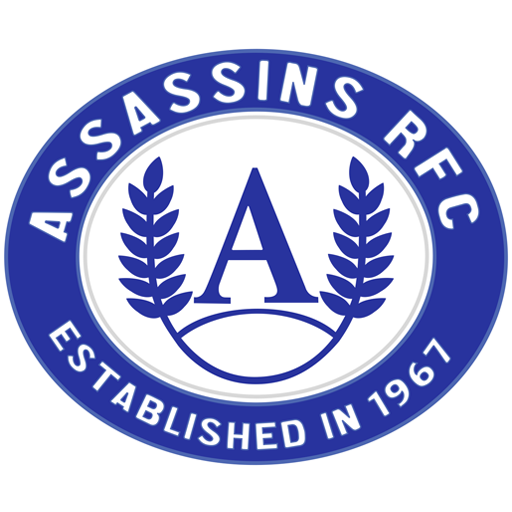Clint Evans, Jim platt & bob rialland
During one early Spring evening in 1967, Clint Evans and Bob Rialland were out fora jog along Churchill Drive Park and stopped to watch a group of guys from the WInnipeg Wasps Rugby Football Club (RFC) who were out for weekly practice. The smallest of the rugby players, Ian Williams, came over and introduced himself, and then invited Clint and Bob to join the practice. They joined in the practice, and then another, and before long were playing for the Wasps during Spring 1967 season.
Clint and Bob spread the good news, and in no time other enthusiastic and sports-minded lads from the Lord Roberts, Riverview, and River-Osborne (Fort Rouge) neighborhoods, many of them recent Churchill High School graduates, joined the Wasps RFC. Figure 1 shows a picture which was taken in Edmonton, Alberta during May 1967 when a combined group of Wasps and Wanderers RFC players took the train to Edmonton to play against the Edmonton Pirate RFC. Included in the picture are five new Wasps (future Assassins) from Fort Rouge, including Bob Rialland (back row, second from left) Rod Kachulak (back row, fourth from left), Clint Evans (back row, third from right), Greg Hull (front row, second from right), and Mike Forbes (front row, far right).
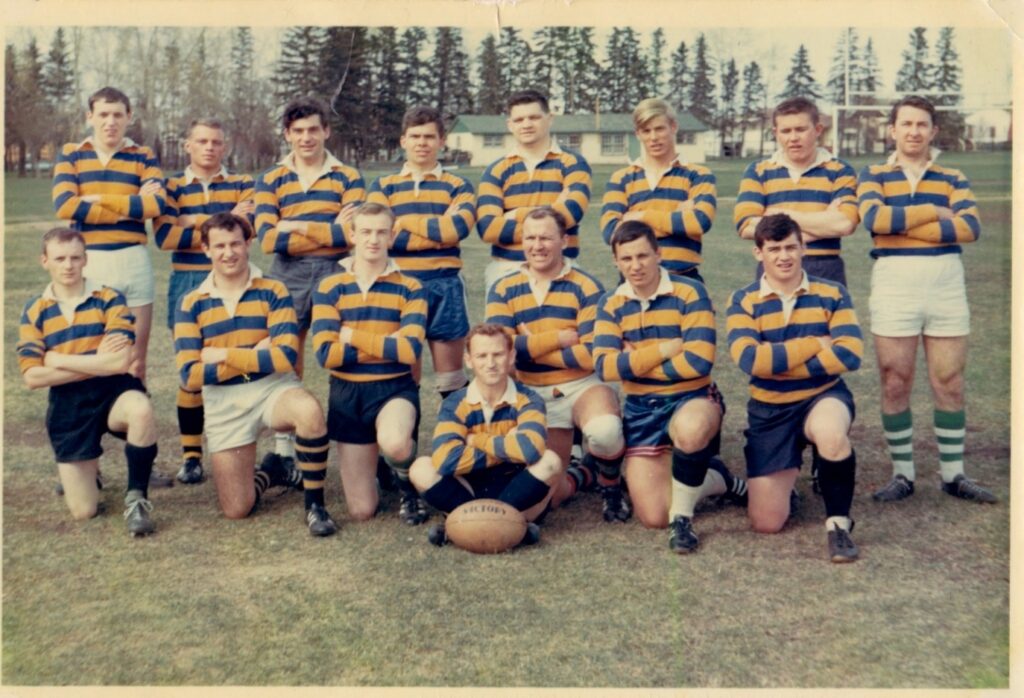
Figure 1. This picture was taken in May 1967 and shows a group of rugby players representing two Winnipeg Rugby Teams — the Wasps and the Wanderers — who travelled to Edmonton to play against the Edmonton Pirates rugby team. (Photo courtesy of Bob Rialland).
During October 1967, during the regular fall rugby season, one of the Wasps’ players, Jim Platt, shared an idea with the Fort Rouge lads about developing a new rugby team, a “home-grown” team of Canadian boys from the Fort Rouge area who would compete in Division A of the Manitoba Rugby Union (MRU). His proposal was well received, and momentum was built by Bob and Clint who organized meetings at the Rialland house with other lads from Fort Rouge who were interested in forming this new rugby club. The first Assassins Executive was formed which included the co-founders of the Assassins RFC: Jim Platt (coach/player), Clint Evans (Club President), and Bob Rialland (Club Captain).
It was during these first five years, fondly referred to as the “Jim Platt era,” when Jim Platt served as both player and coach, that the Assassins gained a strong foothold in competitive rugby in Manitoba. By the 1969 spring rugby season (Figure 2), the Assassins were fielding two men’s teams: one in the Manitoba Rugby Union Men’s A Division and another i the Men’s B division. By spring 1970 there were so many new players trying out for the Assassins that the club fielded three teams: two teams in the A division and one team in the B division of the Manitoba Rugby Football Union. However, in practice it proved difficult in 1970 to consistently field three teams. As a result, the club decided it best to field just one team in the A Division and one in the B Division for the 1971 season.
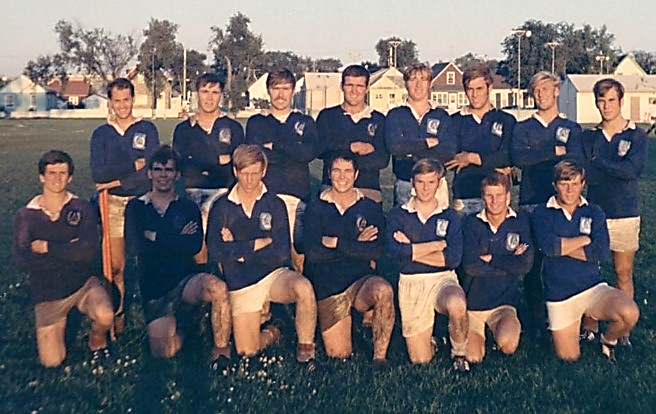
Figure 2. Assassins Div. 1 team following a game with the Wanderers during Spring 1969. Picture taken at the Weston Community Club on Logan Avenue in Winnipeg. 1st Row: Dennis Caine, Rod Kachulak, Mike Murray, John Silver, Bob Boughey, Don Steele and Don Wiles. 2nd Row: Jim Platt, Ron Odgers, Ian McLeod, Bob Keating, John Samm, Bart Evans, Clint Evans, and Dwight Evans (Photo courtesy of Dennis Caine)
By 1971, the Assassins had become a rugby powerhouse in Manitoba. The team rosters included players from the Churchill High School Bulldogs Championship football teams(1967-1970), the Churchill High School Provincial Soccer Champions (1967), Fort Garry Lions 1967 Juvenile National Championship team, and the University of Manitoba Bisons Football Canadian Championship Teams of 1969 and 1970. With the success of recruitment efforts and the leadership of Clint, Jim and Bob, it is perhaps not surprising that the Assassins first division team won the Carling Cup in 1971, defending the Saracens in the league final for the Carling Cup.
In 1972, the Assassins continued to be a formidable force in Manitoba rugby. However, 1972 also marked the end of an era for the Assassins. By the summer of that year, coach Platt had been transferred by his employer to Calgary. Also, some of the guys who had played with the Assassins during the early years graduated from college and moved away from Winnipeg for work-related opportunities. And yet, recruitment of new players was ongoing, and gaps left by some players leaving the club were quickly filled by new players from an ever-expanding catchment area. A first foundation was established for the club to grow in strength, numbers and diversity, to the highly successful club it is today.
The Assassins are externally grateful to Clint Evans, Jim Platt, and Bob Rialland, not only for their vision and leadership, but also for having the energy and commitment to transform that vision into reality. In the following narrative, more detailed information is provided on each of our club co-founders: Clint Evans, Jim Platt, and Bob Rialland. A picture taken during the Assassins RFC 35th Anniversary (Fig. 3) shows Clint, Jim and Bob, as well as many of their early Assassins teammates.
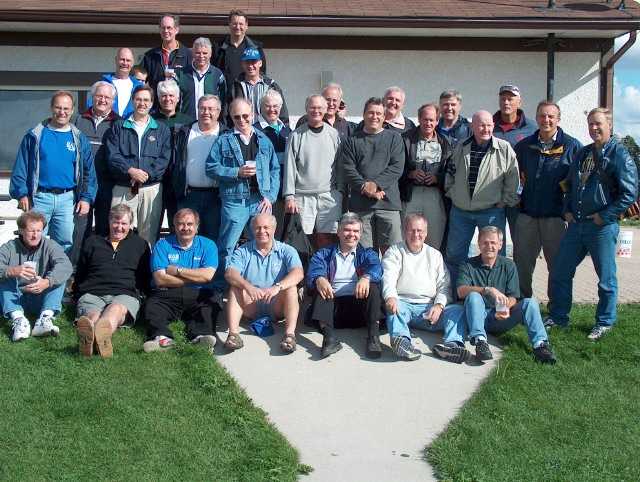
Figure 3. Picture taken at the 2003 Assassins RFC reunion in Winnipeg, including club founders Clint Evans, Bob Rialland, and Jim Platt, and many of the guys who played during the Assassins’ early years, 1968-1972. Seated: Brian Tomchuk, John Samm, Ed Chapman, Bob Rialland, Rod Kachulak, Don Pincock, and Bob Boughey. 2nd Row: Dwight Evans, Dave Yauniskis, Bruce ZImmer, Rick Wilson, Don Steele, Tom Haines, Jim Platt, Ray Ash, Karl Ruban, and Clint Evans. 3rd Row: Dave Samm, Bill Forbes, John Silver, Bart Evans, Brad Oswald, Bob Keating, Ian McLeod, Bob Toogood. 4th Row: Gil Bramwell, Bill Downie, Mike Forbes. 5th Row: Buzz Tisdale, Vic Krisciunas, (Photo courtsey of Clint Evans)
Clint Evans (1949-2006)
Clint Evans was an outstanding all-round athlete at Churchill High School (CHS). An explosive runner, Clint was an outstanding flanker and one of the original “Bulldog Pride” boys (Figure 4.) Along with lacrosse, a minor sport, he excelled at basketball and of course track and field where he set a provincial record in 1966 in the 400-meter race. He could do it all, culminating in his CHS Athlete Of the Year award in 1967. In 2009, Clint was inducted into the CHS Bulldogs Football Hall of Fame as defensive back/wide receiver.
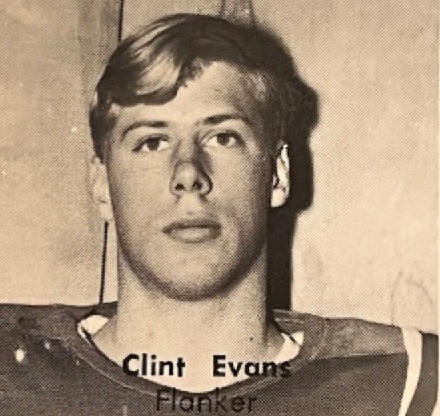
Figure 4. Clint Evans, Churchill High Bulldogs Football, Fall, 1966.
At the University of Manitoba, where he majored Physical Education, Clint continued to excel in both track and football (1967-1971). Notably, the Bison football team won the Vanier Cup in two consecutive seasons 1969 and 1970, and the Canada West Hardy Cup in three consecutive seasons, from 1968 to 1970. A picture taken in fall 1970 (Fig. 5) shows Clint (16) along with coaches and other players of the University of Manitoba Football Team. Notably, Clint was selected as a Western Intercollegiate Association Conference All-Star in 1969 and drafted by the B.C. Lions in 1971.

Figure 5. 1970 University of Manitoba Bison’s Football team (Photo courtesy of John Silver). In addition to Clint (16), also present are other players from the early Assassins Rugby Football team including: Ian McLeod (70), Bob Keating (63), Bart Evans (53), Robin Wright (77), Bob Toogood (32), Mark Milan (60), Jack Galbraith (58), Clint Evans (16), Gil Bramwell (31), John Silver (62), Jamie Horne (11), and Bob Jaskiewicz (68)
In addition to football and track, Clint was also a stellar rugby player both offensively and defensively. In addition to being a co-founder of the Assassins RFC, Clint served as first club president in 1968, and during 1969-1971 as team captain. He was a born leader who inspired others, fostered loyalty and commitment, and led by example. Clint was also instrumental in those early years recruiting club players, including younger brothers Bart and Dwight (2010 MRHOF Builder), as well as from the Churchill Bulldog and Manitoba Bison Football programs. Clint was a leading scorer for the Assassins and, beginning in June 1968, was selected to play with the Provincial rugby team during inter-provincial competitions (Fig. 6).
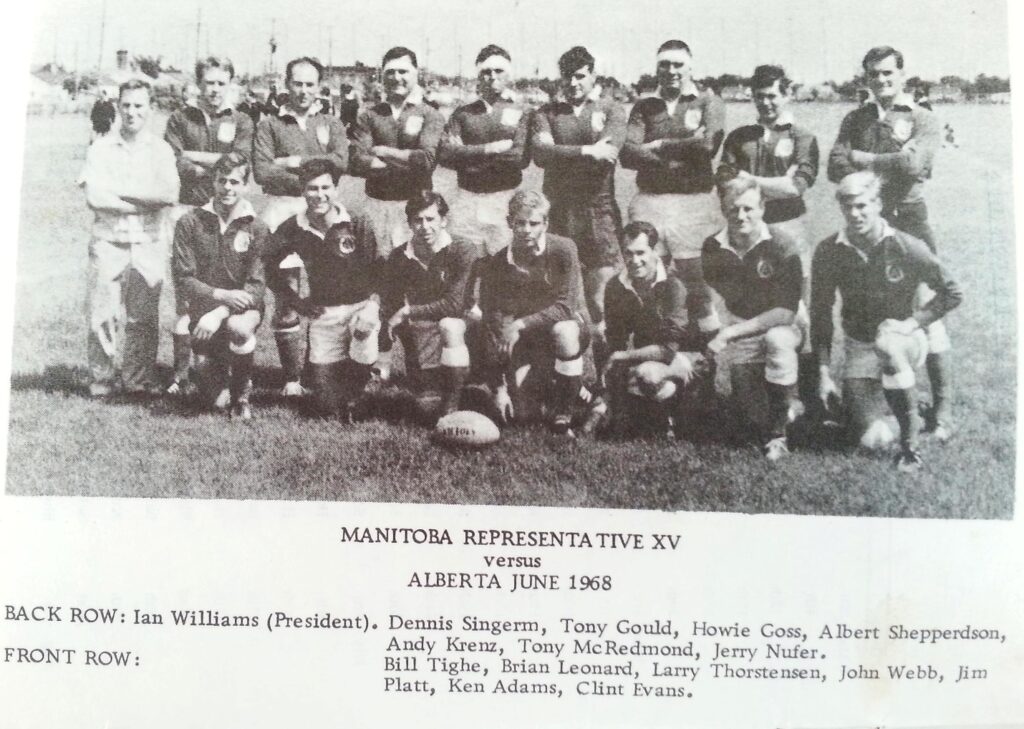
Figure 6. Manitoba Provincial Rugby Football team, June 1968.
Clint continued to play for the Assassin’s until 1974, when he and his wife Linda moved to Prince Edward Island (PEI) where Clint continued his work as a physical education teacher, winning two national awards for the intramural program he developed for his school. He also garnered recognition for his efforts to re-establish and coach Junior Football in PEI (Fig. 7) and for his leadership, both as a player and mentor of the PEI Provincial Rugby team. Tragically, Clint was taken from us far too early, passing away in 2007 due to medical complications caused by frontotemporal dementia.

Figure 7. Picture of Clint taken in PEI. (Photo courtesy of Dwight Evans).
Gone, but not forgotten, Clint was a wonderful, unassuming man who is lauded for his pioneering efforts in originating and developing the Assassins RFC, as well as for his athleticism and accomplishments in rugby as a team leader and player. His impact on the Assassins RFC has been significant and far-reaching. In recognition of his many contributions to rugby, Clint was posthumously inducted as “Pioneer” into the Manitoba Rugby Hall of Fame on October 15, 2022. Clint’s brother, Bart, granddaughter Amelia and son Matt accepted the Hall of Fame award on Clint’s behalf (Fig. 8)
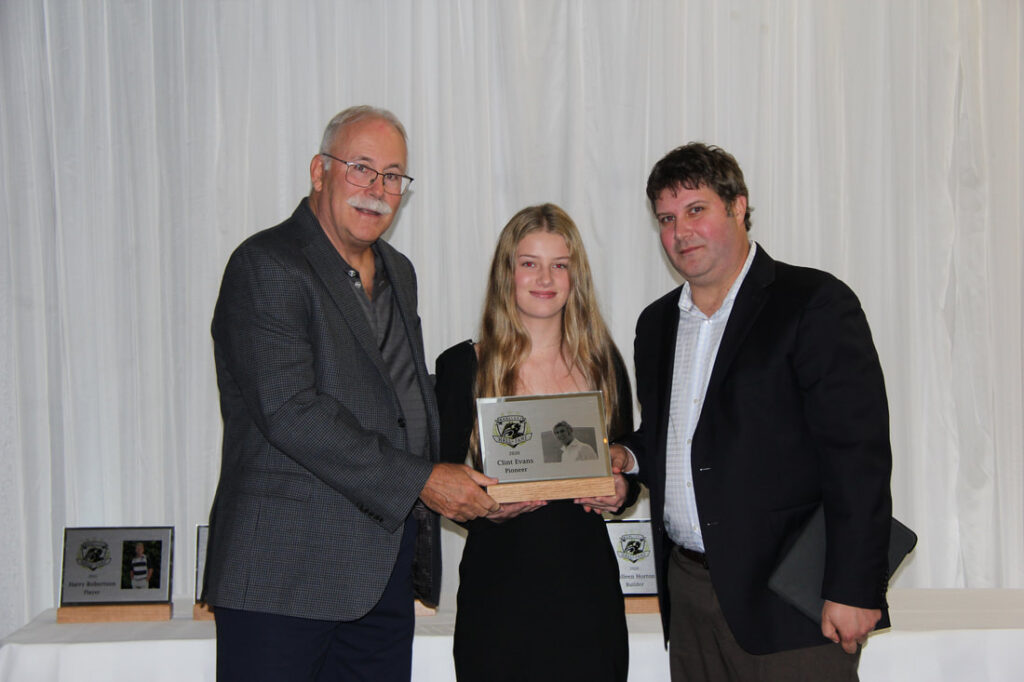
Figure 8. Posthumous presentation of MRHOF “Pioneer” award, October 30, 2022, to Clint Evans, accepted by his brother Bart Evans (left), granddaughter Amelia Evans (centre) and son Matthew Evans (right) (Photo courtesy of Bart Evans).
Jim Platt (1939-2011)
Jim Platt (Fig. 9) was the Assassins founding coach and provided the vision, leadership, and enthusiasm that are at the foundation of much of what the Assassins RFC is today. Jim started his athlete career as a hockey player and cross-country runner. Coached at Danforth Tech High School by the legendary Hector “Hec” Crighton, Jim was an outstanding cross country and steeple chase runner. After high school, Jim continued his success in track and field with the East York Track Team travelling extensively during 1960-1962. (Fig. 10) shows a track event with Jim Platt (#166) running just behind Olympian Bruce Kidd.
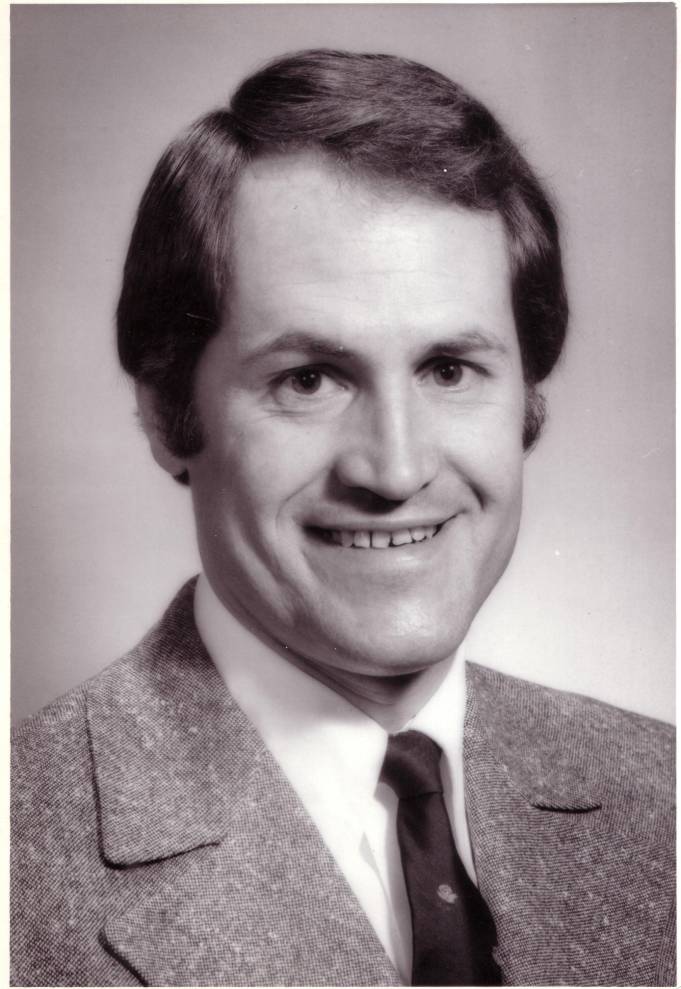
Figure 9. Jim Platt (Photo courtesy of James Platt Jr.)
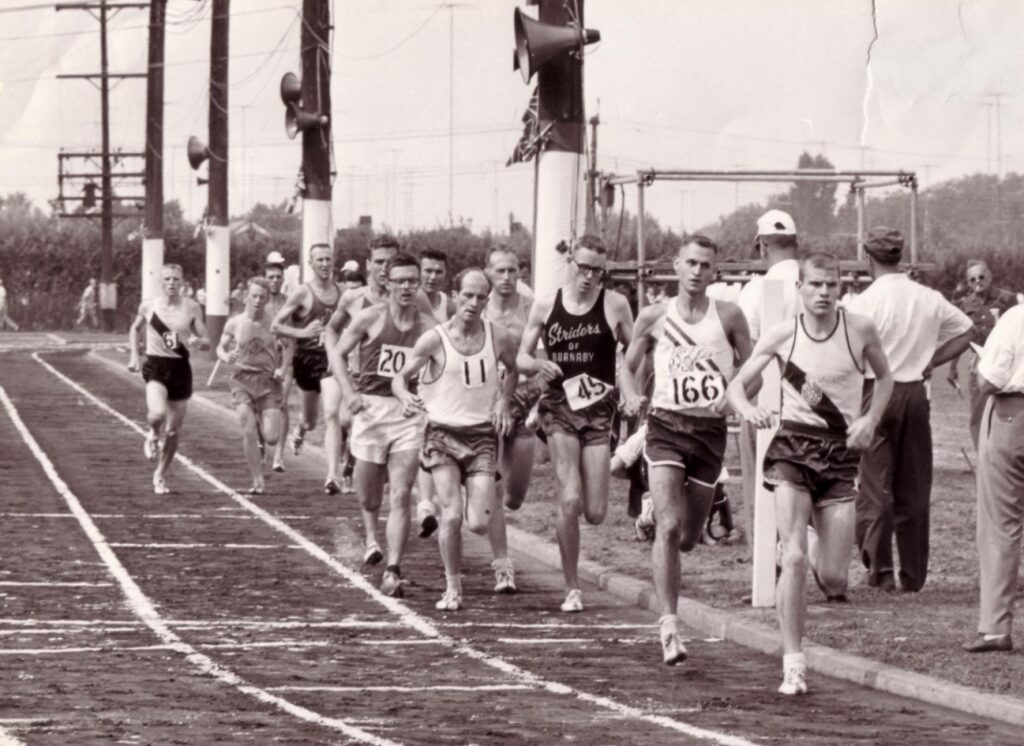
Figure 10. Jim Platt #166 running second to Canadian Olympian Bruce Kidd (Photo courtesy of James Platt Jr.)
While participating in track and field, Jim was introduced to Rugby and began playing for the Toronto Balmy Beach Club in 1962 (Fig. 11). In 1963, while touring with Balmy Beach, Jim was invited to play for London’s Harlequinn Rugby Club. He subsequently played first division scrum half for both the Harlequin and POME Rugby Clubs, touring throughout the British Isles from 1964-1966.
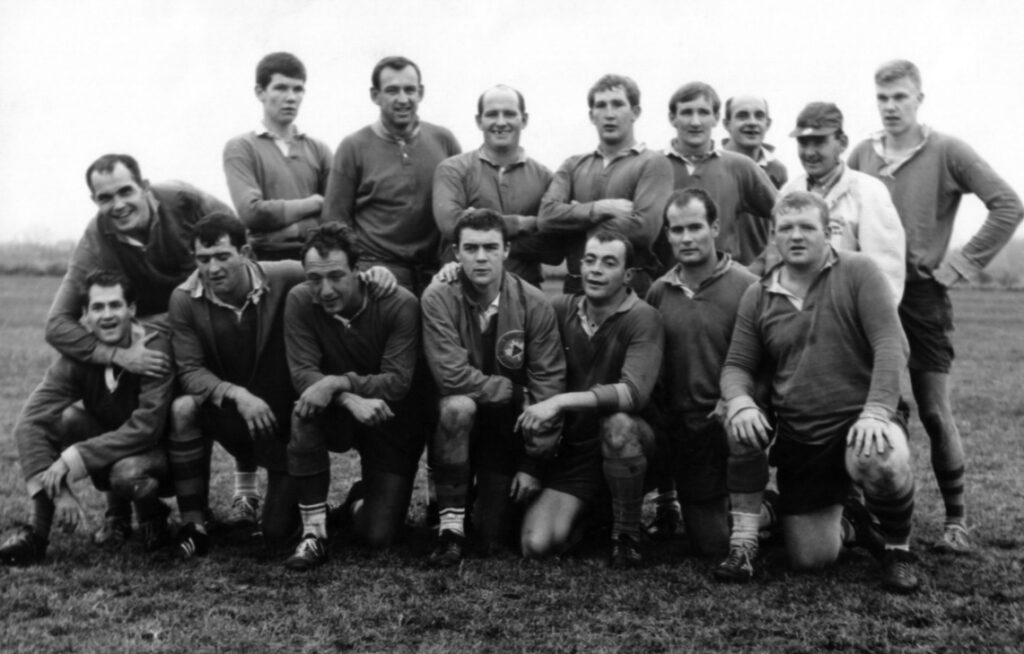
Figure 11. Balmy Beach Rugby Club, Toronto, 1962. Jim Platt is shown in the front row, far left (Photo courtesy of James Platt Jr)
Jim was the first Canadian to play with the Harlequins Football Club (Fig. 12). This achievement is comparable to that of a British individual relocating to Canada and successfully joining the National Hockey league within just one year. The Harlequins play in Premiership Rugby, the top level of English rugby union. Jim earned the press nickname “Canadian Javelin” for his tackling style.
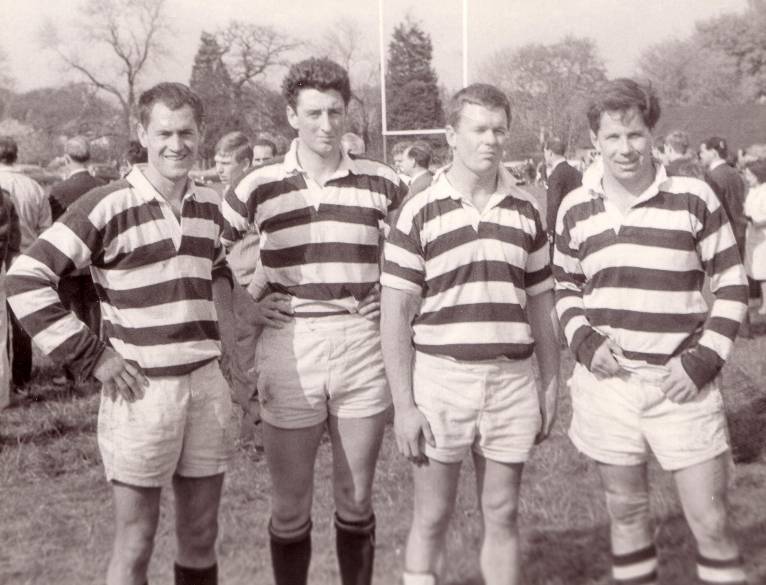
Figure 12. Jim Platt (far left) with Harlequin rugby teammates (Photo courtesy of James Platt Jr.)
Jim returned to Toronto in 1966 and played again in Balmy Beach Rugby Club until his job transferred him to Winnipeg in Spring 1967. After relocating to Winnipeg for work, Jim joined the Wasps Rugby Club, which included several Fort Rouge High School and university students. Jim pitched the idea to these lads of forming a “home-grown” team of Canadian boys from the Fort Rouge area who would compete in Divsion A of the Manitoba Rugby Union. Since most Assassins players were students, Jim provided jerseys, balls and equipment to support the team.
Jim was an exceptional coach and scrum half who knew how to build a rugby club, tradition, and legacy (Fig. 2 and 3). He recognized extraordinary talent and potential all in his players and was able to deliver praise and constructive criticism in a manner that helped them grow, both as rugby players and as individuals. He was also enthusiastic and helped motivate and lead his players by personal example, both on and off the field. Jim served as a colleague and mentor to younger players, helping when required. He was known as the “old man,” although he was only about 10 years older than most of the players.
An outstanding scrum half, Jim was instrumental in the development and evolution of the Assassins RFC from those early days in the late 1960s to one of Manitoba’s premier rugby clubs today, winning their first Division 1 championship in 1971. In addition to his pioneering achievements with the Assassins Rugby Football Club, Jim played on the 1968 Manitoba representative team against Alberta in Edmonton (Fig. 6) and was first Vice President of the Manitoba Rugby Football Union, serving under it’s first President Peter Press.
In addition to his pioneering achievements with the Assassins RFC, Jim went on to achieve remarkable success as a hockey coach. Between 1974 and 1991, he coached 14 different Fort RIchmond Kings and Fort Garry Twins hockey teams. His teams routinely won City Championships earning him “Coach of the Year” awards in 1988 and 1989. In 1992, Jim returned to Toronto and continued his coaching career with the Markham Waxers Jr. Hockey Club until 1994.
Despite his tremendous success as an amateur hockey coach, Jim remained most proud of his accomplishments on the rugby field. He was especially looking forward to his impending induction into the Manitoba Rugby Hall of Fame (Pioneer) on the evening of October 15, 2011. Sadly, he passed away suddenly only weeks before his induction, on September 6, 2011, at his Markham, Ontario home. Jim’s son, James Jr., accepted the Hall of Fame award on his father’s behalf (Fig. 13). Jim would have been so proud to see that the Assassins RFC has become such a formidable force in Manitoba Rugby.
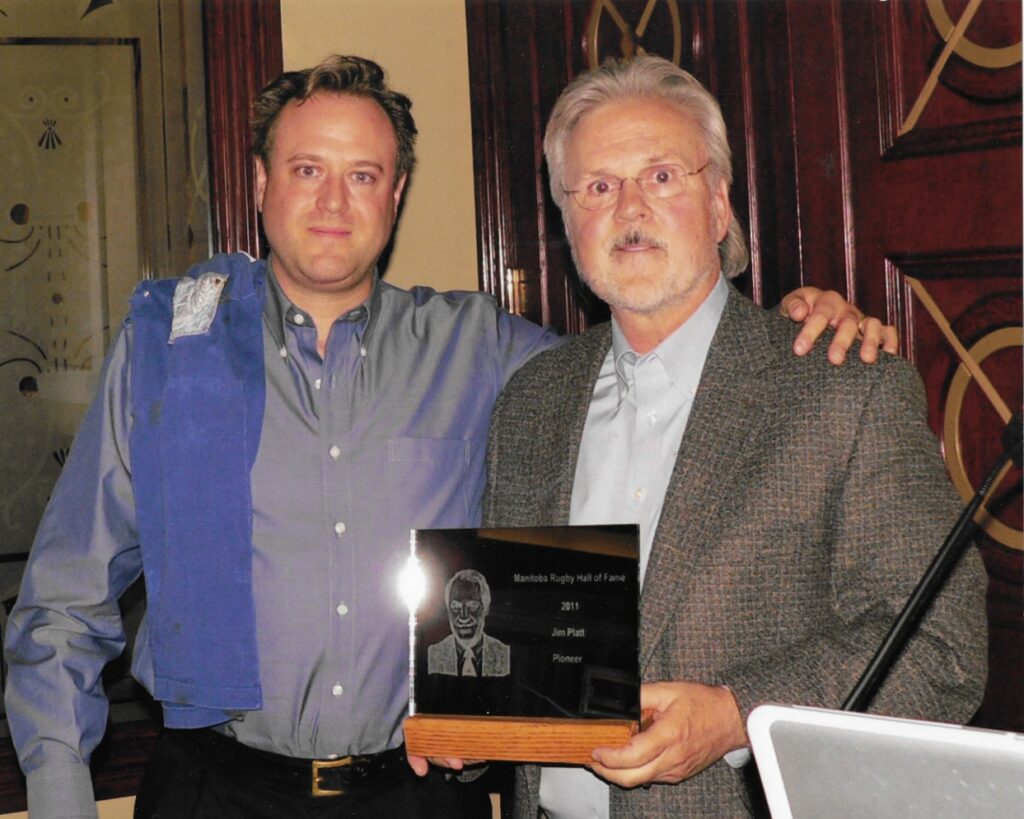
Figure 13. Posthumous presentation of MRHOF “Pioneer” award to Jim Platt, October 15, 2011, presented by Dennis Caine (right) and accepted by Jim’s son, James Platt Jr. (Photo courtesy of the MRHOF)
Bob rialland (1947-2024)
Bob grew up in the Riverview neighborhood of Fort Rouge during the 1950s-60s, a time when many enthusiastic and sports-minded lads were participating in one or more of the outstanding community and school sports programs. Not surprisingly, many participants in these programs went on to distinguish themselves in amateur and profressional sport. Bob was no exception. From a young age, he excelled in a variety of sports including football, track and skiing, but rugby was his true calling.
It was during the Spring of 1967 when Bob first developed his passion for rugby. He was recruited by Ian Williams (2010 MRHOF Pioneer) to play for the Winnipeg Wasps Rugby Club, a club which regularly practiced on Churchill Drive in Riverview, not far from Bob’s parents’ home. Bob immediately embraced this game with its fierce competition and requirements for stamina and skill. In May 1967, he experienced his first taste of inter-provincial rugby when he travelled with the Wasps to Edmonton, Alberta to play against the Edmonton Pirates (Fig. 1)
Bob quickly became respected in rugby circles owing to his passion for the game and his spirited and aggressive style of play. He deeply valued the sense of brotherhood shared between players within a club as well as the camaraderie with players from opposing clubs. Bob also enjoyed the social aspect of the game and could always be conte on to help organize fundraising events and off-season activities to keep the connections with teammates strong.
Along with friends and fellow Wasps teammates, Clint Evans and Jim Platt, Bob co-founded the Assassins RFC in the Fall of 1967. In fact, most of the early planning for this new rugby club occurred in Bob’s parents’ home on Montgomery Avenue in Riverview, Fort Rouge, It was here, in the family Rec Room, where the plans for his new rugby team were drawn up and forwarded, in writing, to the Manitoba RFU. It was also in Bob’s home, where names for the new team were considered, eventually leading to the adoption of the “Assassins,” a name suggested by Jim Platt. Bob’s brother-in-law designed the Assassins Crest — the letter A surrounded by a Laurel Wreath (Fig. 14), a symbol of the club to this day.
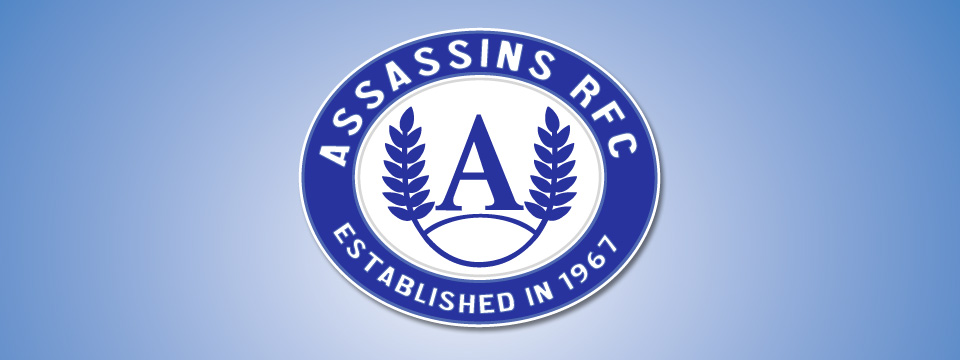
Figure 14. Crest for Assassins Rugby Football Club. (Photo courtesy of Assassins RFC)
There was no shortage of players who wanted to join this new rugby club.Interested lads quickly emerged from amoung CHS graduates and students, many of whom regularly participated in the popular “pick-up” snow football games on Churchill Drive during the winter months. Bob had a way of recruiting players that one could not ignore. His enthusiasm for rugby was infectious and in no time other lads from Fort Rouge were joining the ranks of the Assassins. Bob was instrumental in founding and developing this new club, and for providing leadership both on and off the field.
Bob continued to play with the Assassins throughout the 1970’s but was eventually sidelined with significant injury to his lower extremities. Bob moved with his family to Kelowna, BC. In the later 1980’s, returning to Winnipeg often for Assassins’ anniversary celebrations. (Fig. 3) shows Bob and early Assassins’ players at the clubs’s 35th Anniversary. A picture below (Fig. 15) shows Bob proudly wearing his polo shirt from the Assassins 40th Anniversary.
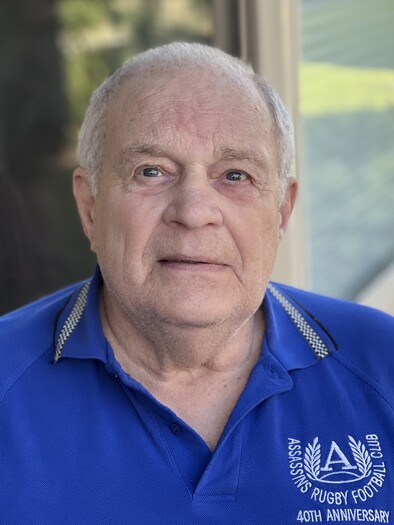
Figure 15. Bob Rialland (Photo courtesy of Pat Rialland)
Bob is well-respected in rugby circles for his pioneering efforts in conceiving, planning and building the Assassins RFC, as well as for his athleticism and accomplishments as a team leader and player. Bob was a true visionary and, along with Clint and Jim, had a clear vision for the Assassins and he inspired others to work towards that vision. His impact on the Assassins RFC and rugby in Manitoba is far reaching and significant. On October 15, 2022, Bob was inducted into the MRHOF as a “Pioneer.” (Fig. 16) shows Bill Forbes presenting this award to Bob at the MRHOF banquet. Sadly, Bob passed away on April 8, 2025, after a lengthy illness. Bob, Jim and Clint are deeply missed by their families, friends and teammates.
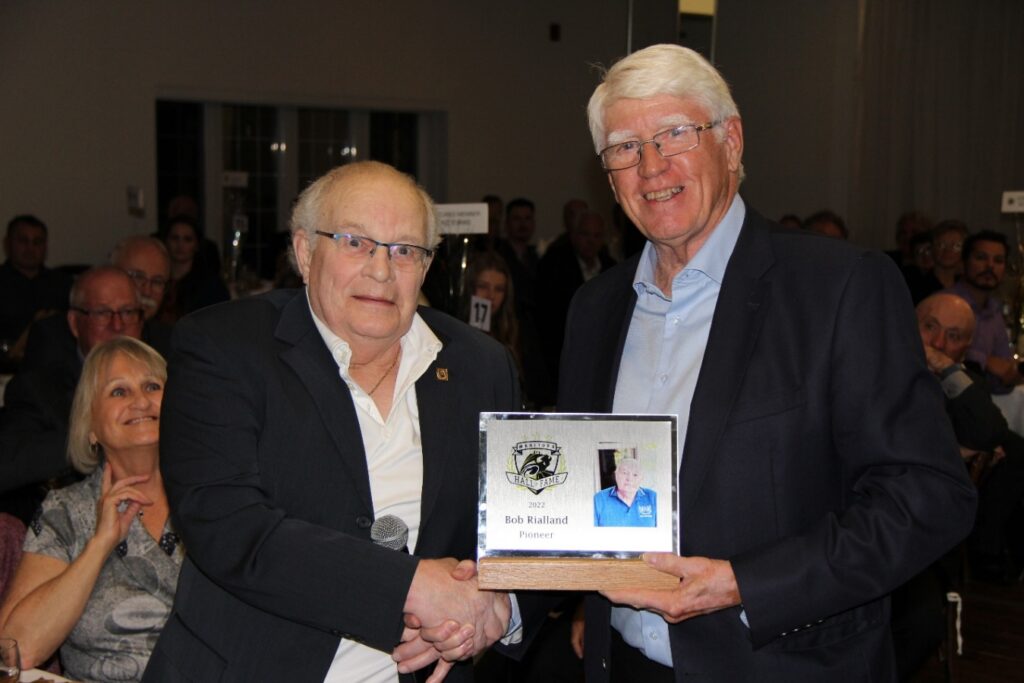
Figure 16. Bill Forbes (right) presenting Bob Rialland (left) with his “Pioneer” Award at the MRHOF Banquet, October 30, 2022. Bob’s wife, Pat (seated) can be seen to the left and behind Bob (Photo courtsey of MRHOF).
